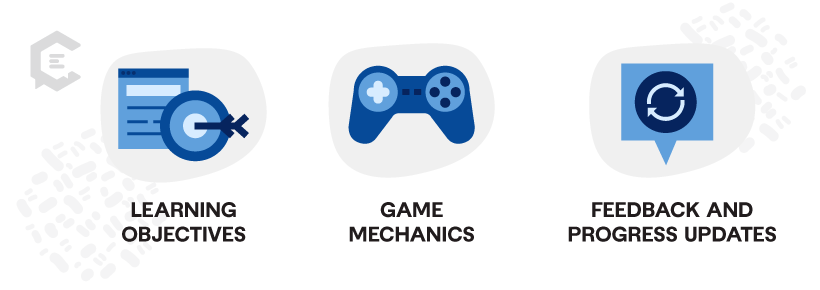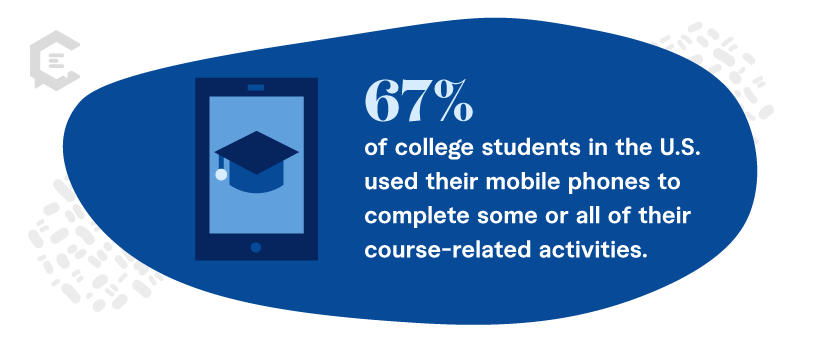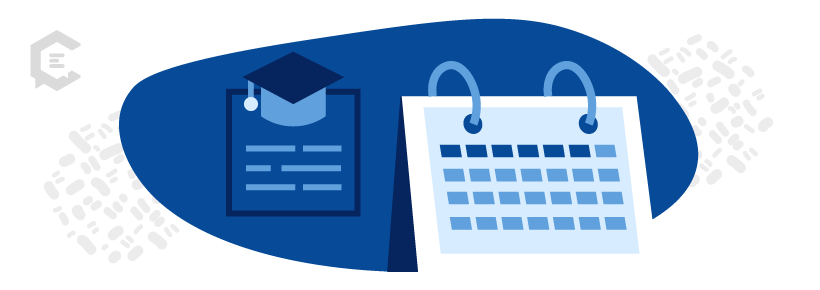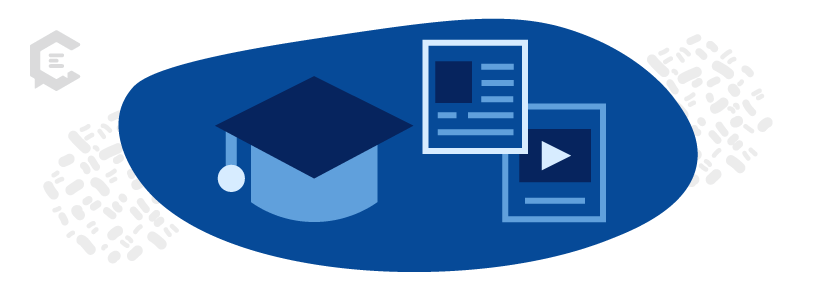The education sector is rapidly transforming — with traditional learning switching to digital formats, new technologies, and teaching methods.
But with evolution comes turbulence. The shifting sands of learner demands, pulsating trends, and a burgeoning competitive landscape can be daunting.
To truly shine in 2025, it’s not just about staying updated; it’s about pioneering forward. With the right strategic education marketing content, you can eclipse competitors, captivate your target audiences, satisfy modern learner appetites, and ride the wave of the next big trend. Step into the future with confidence!
6 Pioneering Education Content Ideas for 2025
Consider the innovative education content ideas below as you create your 2025 content calendar.
1. Gamified and collaborative learning
Gamification makes learning more enjoyable while encouraging friendly competition and collaboration. It helps motivate your digital learners and keep them engaged.
Develop educational challenges or games that need problem-solving and teamwork. You can display leaderboards and give rewards to your online course learners.
Consider the points below when preparing a gamified learning program:
- The learning objectives. Determine what you want learners to learn through the game.
- The game mechanics. Your game mechanics should align with your learning objectives. Some elements included in your game mechanics are rules, quests, badges, points, and challenges.
- Feedback and progress updates. Motivate your students to complete the program by sharing progress updates. The updates instill a sense of progress and growth in the students, which encourages them to continue with their learning journey.
2. Virtual campus tours
Boring, run-of-the-mill educational experiences won’t cut it in 2025. Learners expect and prefer a more immersive experience, from the virtual tour to the in-person classes.
If you operate an educational institution with a physical campus on top of holding online classes, you can run a virtual campus tour for potential students. It’s a great way to show learners around so they won’t need to travel while getting the close-to-reality campus tour experience.
According to survey data, 96% of teachers believe incorporating technology in lessons and related activities positively impacts student participation. Use this to your advantage by adding 360-degree videos to your VR campus tours. Include live Q&A sessions and other interactive elements.
Besides VR, consider harnessing AI for content ideation and briefing to help streamline your education content planning and strategy development.
3. Live streaming classes with interactive elements
Live streaming allows your learners to experience online education in real time.
It facilitates discussion, interactivity, and engagement, connecting learners and instructors despite everything occurring online.
Consider hosting live streaming classes and running interactive quizzes, polls, and chats to check in and keep your students engaged. It helps encourage learners to participate and ask questions actively.
4. Modules designed for microlearning
Provide bite-sized, accessible content and learning materials to cater to the modern learners’ short attention spans. Mini-learning modules can also make learning more convenient and flexible for students on the go.
Develop brief yet focused modules on certain topics. And easily share your micro modules through email, mobile apps, and learning management systems, such as Google Classroom and Canvas LMS, allowing students to learn at their own pace and convenience.
Survey data shows that 67% of college students in the U.S. used their mobile phones to complete some or all of their course-related activities, making it crucial to include mobile channels when distributing your learning modules.
5. Educational podcasts
Podcasts are a great learning channel for students because of the flexibility it offers. The students can learn while commuting, exercising, or doing household chores.
What’s more, since the students can pause the podcast, they can learn at their own pace, making their learning experience less overwhelming,
To uncover which podcast episodes or topics will resonate with your audience, you can ask the students about the topics they struggle with. That way, even though they aren’t in the classroom and cannot read content, they can still study by tuning in to your podcasts.
If you don’t have any information about the topics that resonate with your audience, at least for now, you can get inspiration from these 100 blog content ideas calendar.
6. AI-driven personalized learning
AI can help educators create dynamic, responsive, and individualized educational experiences.
- Adaptive learning platforms: These systems can analyze how well students are doing, how they prefer to learn, and how interested they are in the material. Then, they can automatically change the difficulty, speed, and the way the material is presented. This makes sure that each student is challenged and motivated.
- Intelligent tutoring companions: AI-powered virtual tutors serve as 24/7 learning partners. These companions offer instant feedback on assignments and help with homework. They can adapt their communication style to best suit each learner’s preferences.
- Personalized content curation: AI algorithms can scan text, videos, podcasts, and interactive simulations to create custom learning materials for each student. This ensures the content is aligned with the curriculum and presented in formats that resonate with individual learning preferences.
Sculpting Your 2025 Education Content Calendar
Use the tips below to map out your content planning, publishing, and distribution for 2025.
Mastering content scheduling for optimal engagement
A content calendar starts with planning your schedule, which includes identifying your optimal publishing dates and times for maximum audience engagement.
By tracking and analyzing your target audiences’ data, such as when they’re most active, you’ll be able to uncover peak engagement times. Doing so helps you schedule your content to go live at the right time and reach your target audiences when they’ll most likely see and engage with it.
Personalizing content to match diverse learner needs
Learners require various content depending on their goals, needs, interests, and preferences (among others). Tailor your content and set your calendar to address your learners’ needs.
To cater to various students ‘ preferences, offer multiple content formats, such as live feeds and infographics.
Building in flexibility for content updates and adaptations
Education isn’t static, which is why you should update your blog content strategy every six months.
Allow some wiggle room in your content calendar for content updates and adaptations. Doing so helps keep your education content materials relevant and up-to-date for learners.
Ensuring Your Education Content Stands the Test of Time
Create sustainable content capable of thriving in 2025 and the years to come. Consider the tips below.
- The need for continuous content assessment and revision. Assess your education content’s relevance and accuracy to keep it evergreen. For instance, review, revise, and update your website content and other materials to ensure they reflect current knowledge, trends, etc.
- Staying in tune with ongoing educational trends and developments. Stay ahead of competitors by incorporating educational trends, topics, and methodologies into your marketing content and learning materials.
- Harnessing audience feedback for content refinement. Your learners and teachers are your best source of information for fine-tuning your content. Gather feedback from your educators and students to tweak and improve your education content and ensure it resonates with target audiences.
Commit to Lifelong Learning in Content Creation
Harness the power of innovative education content and continuously refine your content strategy.
Keep up with the latest technologies, innovations, and trends and adapt to these rapid changes to create relevant, evergreen education content that fuels your marketing initiatives. Whether you’re an institution marketing to prospective students or an informational website showcasing the top schools, student loans, and more; it’s essential to produce content that speaks to your audience’s needs. Download our curated list of the 25 best education content ideas to elevate your content calendar.
Partner with ClearVoice in hiring freelance education content writers to help streamline and level up your content marketing initiatives.







